Now Reading: Comet Lemmon might be the best comet of 2025
-
01
Comet Lemmon might be the best comet of 2025
Comet Lemmon might be the best comet of 2025

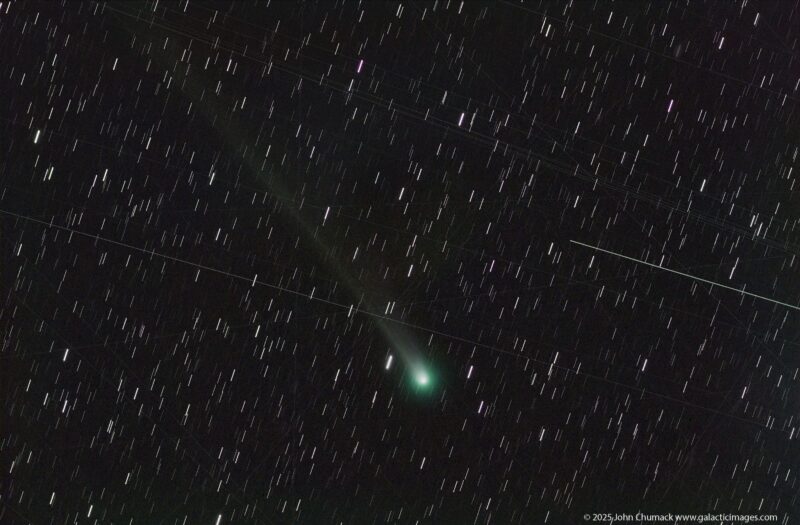
Comet Lemmon might be the best comet of 2025
Of all the comets suddenly soaring into our skies, Comet Lemmon (C/2025 A6) might be the best of the year. And this comet favors Northern Hemisphere observers. In early October, Comet Lemmon will cut a path underneath the giant ladle shape of the Big Dipper in Ursa Major. The comet will be closest to Earth on October 21, 2025, but it will continue to brighten after that, likely reaching its brightest – and possibly visible with your eyes alone – around October 31 or November 1. Comet Lemmon reaches its closest point to the sun on November 8.
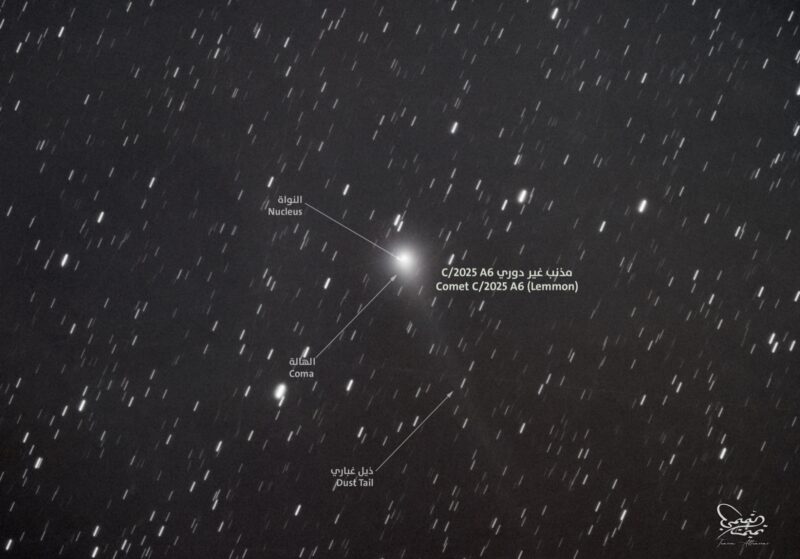
How to see Comet Lemmon
Comet Lemmon favors Northern Hemisphere viewers, spending much of October near the Big Dipper. But on northern fall evenings, the Big Dipper is quite low on the horizon. So during the first half of October, if you want to catch a glimpse of it, you’ll likely have to look in the early hours of the morning until before sunrise. And during the first half of the month, expect the comet to still be dim, around magnitude 7, and only visible with optical aid.
By mid-October, the comet will become easier to see, rising in the evening sky. On October 16, 2025, Comet Lemmon will be passing near Cor Caroli, the brightest star in Canes Venatici the Hunting Dogs. At this point, some estimates put the comet at a possible unaided eye visibility and still brightening.
Comet Lemmon will be at its brightest at the end of October and beginning of November. Estimates of its brightness range from magnitude 4 to 2.5. Keep in mind, comets are notoriously unpredictable. But there’s a good chance you might be able to find the comet with your eyes alone from a dark-sky site.
On Halloween and into early November, Comet Lemmon will pass in front of the stars of Ophiuchus. See the finder charts below.
Finder charts for Comet Lemmon
The good news is that during closest approach in mid-October, Comet Lemmon is in the sunset sky. Find a good observing site with no obstructions to the western horizon so you can observe and photograph this “once in a lifetime” comet. Our finder charts are for the Northern Hemisphere. To get a precise chart for your location, visit Stellarium-Web.
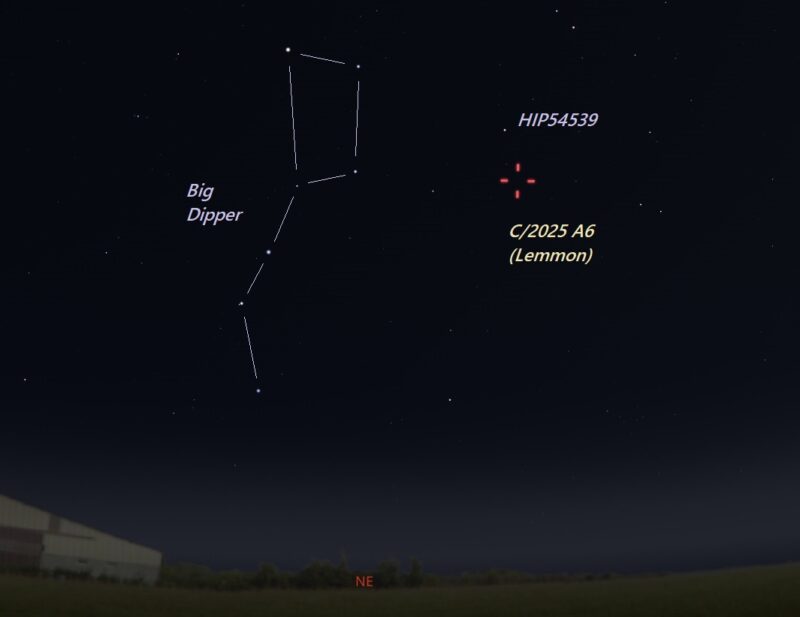
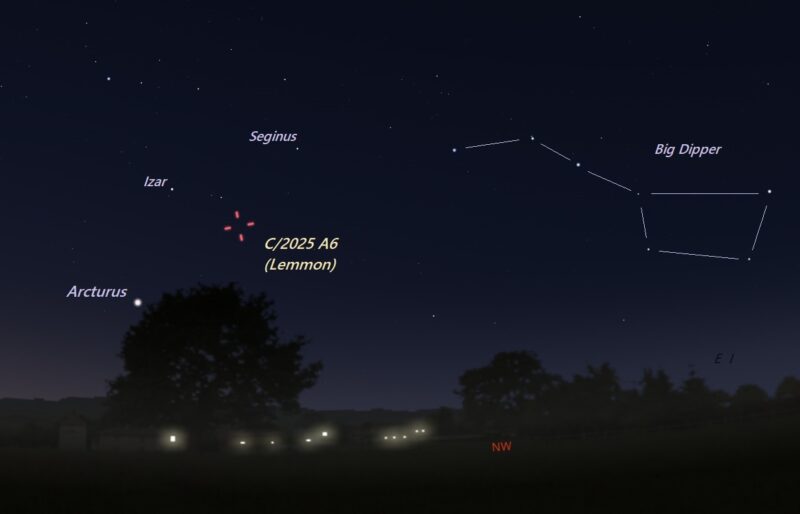
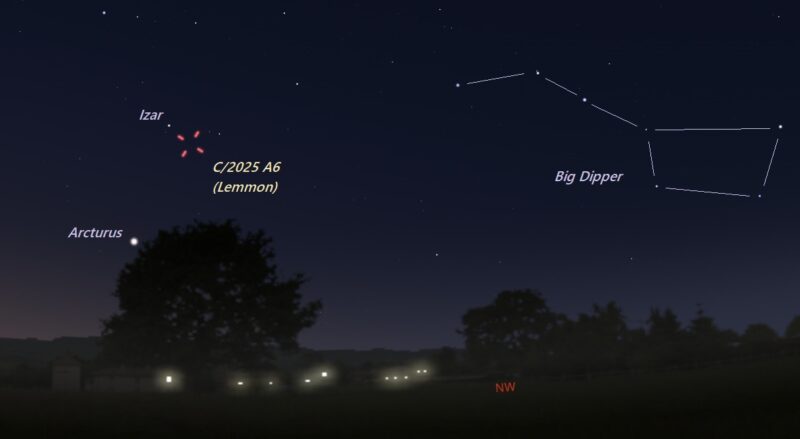
Additional finder chart
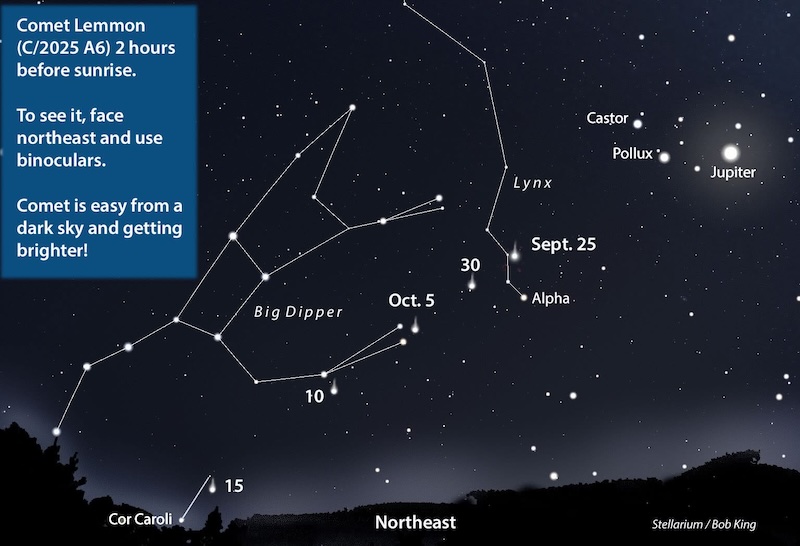
History of Comet C/2025 A6 Lemmon
Astronomers using the 60-inch (1.5-meter) telescope at Mt. Lemmon, Arizona, discovered this comet back on January 3, 2025. There are also precovery images of the comet in PanSTARRS data from as early as November 12, 2024. The term precovery is one that astronomers use to mean pre-discovery recovery. So the comet was on images earlier than those in which it was discovered. But they did not realize it was there until they went back and looked for it. Using this extended data, astronomers have been able to calculate its orbit. And it has an orbit that takes it about 1,350 years to circle the sun once.
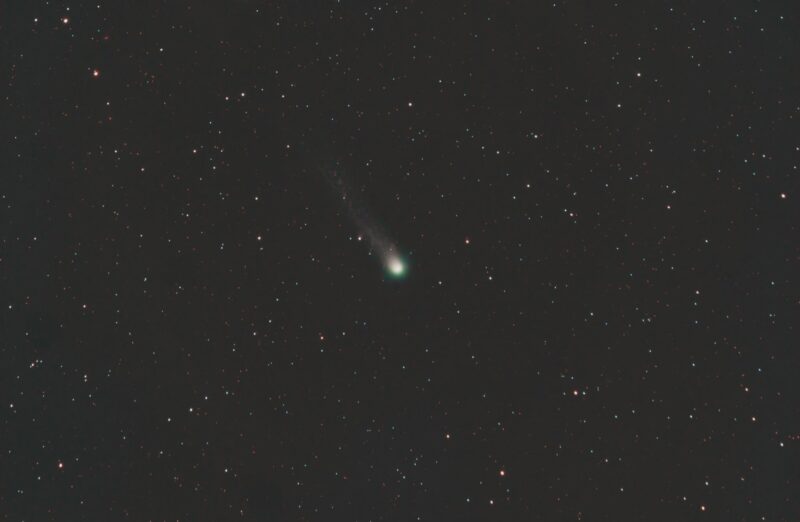
Other comets currently active
Comet Lemmon is just one of a number of comets currently in our sky. The most famous is probably the interstellar comet, 3I/ATLAS, which will pass closest to the sun in late October. It’s been brightening more quickly than expected, but at the moment it is still well out of range of visibility with the unaided eye.
Another comet that recently came upon the scene is Comet SWAN. As of the beginning of October, it might be breaking into range of the unaided eye from a dark-sky site.
Bottom line: Comet Lemmon might be the brightest comet of 2025. It could become bright enough to see with your eye alone in late October and early November.
The post Comet Lemmon might be the best comet of 2025 first appeared on EarthSky.
Stay Informed With the Latest & Most Important News
Previous Post
Next Post
-
 012024 in Review: Highlights from NASA in Silicon Valley
012024 in Review: Highlights from NASA in Silicon Valley -
 02Panasonic Leica Summilux DG 15mm f/1.7 ASPH review
02Panasonic Leica Summilux DG 15mm f/1.7 ASPH review -
 03How New NASA, India Earth Satellite NISAR Will See Earth
03How New NASA, India Earth Satellite NISAR Will See Earth -
 04And Thus Begins A New Year For Life On Earth
04And Thus Begins A New Year For Life On Earth -
 05Astronomy Activation Ambassadors: A New Era
05Astronomy Activation Ambassadors: A New Era -
06SpaceX launch surge helps set new global launch record in 2024
-
 07From Polymerization-Enabled Folding and Assembly to Chemical Evolution: Key Processes for Emergence of Functional Polymers in the Origin of Life
07From Polymerization-Enabled Folding and Assembly to Chemical Evolution: Key Processes for Emergence of Functional Polymers in the Origin of Life




















